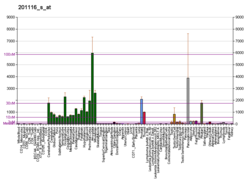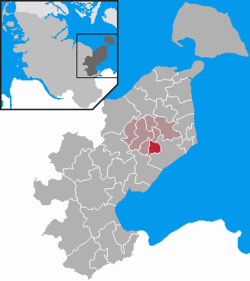카르복시펩티드가수분해효소E
Carboxypeptidase E| CPE | |||||||||||||||||||||||||||||||||||||||||||||||||||
|---|---|---|---|---|---|---|---|---|---|---|---|---|---|---|---|---|---|---|---|---|---|---|---|---|---|---|---|---|---|---|---|---|---|---|---|---|---|---|---|---|---|---|---|---|---|---|---|---|---|---|---|
| 식별자 | |||||||||||||||||||||||||||||||||||||||||||||||||||
| 에일리어스 | CPE, CPH, 카르복시펩티드가수분해효소E, IDDH, BDVS | ||||||||||||||||||||||||||||||||||||||||||||||||||
| 외부 ID | OMIM: 114855 MGI: 101932 HomoloGene: 48052 GeneCard: CPE | ||||||||||||||||||||||||||||||||||||||||||||||||||
| |||||||||||||||||||||||||||||||||||||||||||||||||||
| |||||||||||||||||||||||||||||||||||||||||||||||||||
| |||||||||||||||||||||||||||||||||||||||||||||||||||
| |||||||||||||||||||||||||||||||||||||||||||||||||||
| |||||||||||||||||||||||||||||||||||||||||||||||||||
| 위키데이터 | |||||||||||||||||||||||||||||||||||||||||||||||||||
| |||||||||||||||||||||||||||||||||||||||||||||||||||
카르복시펩티드가수분해효소 H(CPH)와 엔케팔린 변환효소라고도 알려진 카르복시펩티드가수분해효소 E(CPE)는 [5]CPE 유전자에 의해 인체에서 암호화되는 효소이다.이 효소는 폴리펩타이드로부터 C 말단 아르기닌 또는 리신 잔기의 방출을 촉매한다.
CPE는 대부분의 신경펩타이드와 펩타이드 [6]호르몬의 생합성에 관여한다.신경펩타이드와 펩타이드 호르몬의 생산은 일반적으로 작은 단백질인 펩타이드 전구체를 절단하는 두 세트의 효소를 필요로 한다.우선 프로단백질변환효소는 특정 부위에서 전구체를 절단하여 C말단 염기성 잔기(리신 및/또는 아르기닌)를 포함한 중간체를 생성한다.그런 다음 이들 중간체를 CPE로 분해하여 염기성 잔류물을 제거합니다.일부 펩타이드의 경우, 많은 펩타이드의 경우 프로프로틴 변환효소 및 CPE의 작용이 [7]생체활성펩타이드를 생성하기에 충분하지만, 그 후 C-말단 아미데이션과 같은 추가 처리 단계가 필요하다.
조직 분포
카르복시펩티드가수분해효소 E는 뇌와 내분비 췌장, 뇌하수체 및 부신 크롬아핀 세포를 포함한 신경 내분비계 전체에서 발견됩니다.세포 내에서는 카르복시펩티드가수분해효소 E가 펩타이드 기질 및 생성물과 함께 분비과립에 존재한다.카르복시펩티드가수분해효소 E는 막 관련 형태와 용해 형태 모두 존재하는 당단백질이다.막결합은 단백질의 C 말단 영역 내의 양친매성 α-나선에 기인한다.
종 분포
카르복시펩티드가수분해효소 E는 조사된 척추동물의 모든 종에서 발견되며, 또한 연구된 많은 다른 유기체(선충, 바다 민달팽이)에도 존재한다.초파리(드로소필라)에는 카르복시펩티드가수분해효소 E가 존재하지 않으며, 카르복시펩티드가수분해효소 E를 다른 효소(아마도 카르복시펩티드가수분해효소 D)가 채운다.사람에게 CPE는 CPE [5][8]유전자에 의해 암호화된다.
기능.
| 카르복시펩티드가수분해효소E | |||||||||
|---|---|---|---|---|---|---|---|---|---|
| 식별자 | |||||||||
| EC 번호 | 3.4.17.10 | ||||||||
| CAS 번호 | 81876-95-1 | ||||||||
| 데이터베이스 | |||||||||
| 인텐츠 | IntEnz 뷰 | ||||||||
| 브렌다 | 브렌다 엔트리 | ||||||||
| ExPASy | NiceZyme 뷰 | ||||||||
| 케그 | KEGG 엔트리 | ||||||||
| 메타사이크 | 대사 경로 | ||||||||
| 프라이머리 | 프로필 | ||||||||
| PDB 구조 | RCSB PDB PDBe PDBum | ||||||||
| 진 온톨로지 | AmiGO / QuickGO | ||||||||
| |||||||||
카르복시펩티드가수분해효소 E는 거의 모든 신경펩티드와 펩타이드 호르몬의 생성에서 기능한다.이 효소는 신경펩타이드를 활성화하는 엑소펩티다아제 역할을 한다.그것은 염기성 C 말단 아미노산을 분해하여 펩타이드의 활성 형태를 생성함으로써 그렇게 한다.카르복시펩티드가수분해효소 E의 산물은 인슐린, 엔케팔린, 바소프레신, 옥시토신 및 대부분의 다른 신경내분비펩타이드 호르몬과 신경펩타이드를 포함한다.
막 관련 카르복시펩티드가수체(Carboxy펩티드가수체)와 분비과립에서 조절된 분비 단백질의 선별 신호 역할을 하는 것이 제안되었다. 조절된 분비 단백질은 대부분 호르몬과 신경펩타이드이다.[9]그러나 카르복시펩티드가수분해효소 E에 대한 이러한 역할은 여전히 논란이 되고 있으며, 증거는 이 효소가 조절된 분비 단백질의 분류에 필요하지 않다는 것을 보여준다.
임상적 의의
돌연변이 카르복시펩티드가수분해효소 E, Cpe를fat 가진 쥐는 비만이나 [10]불임과 같은 내분비 장애를 보인다.일부 변종 쥐에서 지방 돌연변이는 성체 수컷 쥐에서도 고프로인슐린혈증을 유발하지만, 이것은 모든 변종 쥐에서 발견되는 것은 아니다.Cpefat 생쥐의 비만과 불임은 나이가 들면서 발병한다; 어린 생쥐(8주 미만)는 가임성이 있고 정상 체중을 가지고 있다.Cpefat 마우스에서의 펩타이드 처리는 C-말단 리신 및/또는 아르기닌 확장을 가진 펩타이드가 다량 축적되어 손상된다.성숙한 형태의 펩타이드 수치는 일반적으로 이러한 생쥐에서 감소하지만 제거되지는 않는다.관련된 효소(카르복시펩티드가수분해효소 D)도 신경펩타이드를 처리하는 데 기여하고 Cpefat 마우스에서 성숙한 펩타이드를 발생시키는 것으로 생각된다.
CPE 유전자의 돌연변이는 인간 집단 내에서 흔하지 않지만, 확인된 바 있다.극단적인 비만 환자 한 명(체질량 지수 > 50)은 CPE [11]유전자 거의 전체를 삭제하는 돌연변이를 가지고 있는 것으로 밝혀졌다.이 환자는 지적 장애(읽거나 쓸 수 없음)가 있었고 CPE 활동이 없는 생쥐와 유사한 비정상적인 포도당 항상성을 보였다.
비만에서, 높은 수준의 순환 유리 지방산은 췌장 베타 세포에서 카르복시펩티다아제 E 단백질의 양을 감소시켜 베타 세포 기능 장애(하이퍼프로인슐린혈증)와 증가된 베타 세포 아포토시스(ER 스트레스 [12]증가를 통해)를 초래하는 것으로 보고되었다.그러나 CPE는 대부분의 신경펩타이드와 펩타이드 호르몬 생산을 위한 속도 제한 효소가 아니기 때문에 CPE 활성의 비교적 완만한 감소가 어떻게 생리적인 효과를 일으킬 수 있는지는 명확하지 않다.
「 」를 참조해 주세요.
레퍼런스
- ^ a b c GRCh38: 앙상블 릴리즈 89: ENSG00000109472 - 앙상블, 2017년 5월
- ^ a b c GRCm38: 앙상블 릴리즈 89: ENSMUSG000037852 - 앙상블, 2017년 5월
- ^ "Human PubMed Reference:". National Center for Biotechnology Information, U.S. National Library of Medicine.
- ^ "Mouse PubMed Reference:". National Center for Biotechnology Information, U.S. National Library of Medicine.
- ^ a b "Entrez Gene: CPE carboxypeptidase E".
- ^ Fricker LD (1988). "Carboxypeptidase E". Annual Review of Physiology. 50: 309–21. doi:10.1146/annurev.ph.50.030188.001521. PMID 2897826.
- ^ Fricker LD (2012). "Chapter 3.5 Carboxypeptidase E". Neuropeptides and Other Bioactive Peptides: From Discovery to Function (Color Version). Colloquium Series on Neuropeptides. Vol. 1. Morgan & Claypool Life Sciences. pp. 1–92. doi:10.4199/C00056ED1V01Y201204NPE002. ISBN 978-1-61504-521-1.
- ^ Manser E, Fernandez D, Loo L, Goh PY, Monfries C, Hall C, Lim L (April 1990). "Human carboxypeptidase E. Isolation and characterization of the cDNA, sequence conservation, expression and processing in vitro". The Biochemical Journal. 267 (2): 517–25. doi:10.1042/bj2670517. PMC 1131319. PMID 2334405.
- ^ Cool DR, Normant E, Shen F, Chen HC, Pannell L, Zhang Y, Loh YP (January 1997). "Carboxypeptidase E is a regulated secretory pathway sorting receptor: genetic obliteration leads to endocrine disorders in Cpe(fat) mice". Cell. 88 (1): 73–83. doi:10.1016/S0092-8674(00)81860-7. PMID 9019408. S2CID 18629145.
- ^ Naggert JK, Fricker LD, Varlamov O, Nishina PM, Rouille Y, Steiner DF, Carroll RJ, Paigen BJ, Leiter EH (June 1995). "Hyperproinsulinaemia in obese fat/fat mice associated with a carboxypeptidase E mutation which reduces enzyme activity". Nature Genetics. 10 (2): 135–42. doi:10.1038/ng0695-135. PMID 7663508. S2CID 19798125.
- ^ Alsters SI, Goldstone AP, Buxton JL, Zekavati A, Sosinsky A, Yiorkas AM, Holder S, Klaber RE, Bridges N, van Haelst MM, le Roux CW, Walley AJ, Walters RG, Mueller M, Blakemore AI (Jun 2015). "Truncating Homozygous Mutation of Carboxypeptidase E (CPE) in a Morbidly Obese Female with Type 2 Diabetes Mellitus, Intellectual Disability and Hypogonadotrophic Hypogonadism". PLOS ONE. 10 (6): e0131417. Bibcode:2015PLoSO..1031417A. doi:10.1371/journal.pone.0131417. PMC 4485893. PMID 26120850.
- ^ Jeffrey KD, Alejandro EU, Luciani DS, Kalynyak TB, Hu X, Li H, Lin Y, Townsend RR, Polonsky KS, Johnson JD (June 2008). "Carboxypeptidase E mediates palmitate-induced beta-cell ER stress and apoptosis". Proceedings of the National Academy of Sciences of the United States of America. 105 (24): 8452–7. Bibcode:2008PNAS..105.8452J. doi:10.1073/pnas.0711232105. PMC 2448857. PMID 18550819.
추가 정보
- Goodge KA, Hutton JC (August 2000). "Translational regulation of proinsulin biosynthesis and proinsulin conversion in the pancreatic beta-cell". Seminars in Cell & Developmental Biology. 11 (4): 235–42. doi:10.1006/scdb.2000.0172. PMID 10966857.
- Beinfeld MC (January 2003). "Biosynthesis and processing of pro CCK: recent progress and future challenges". Life Sciences. 72 (7): 747–57. doi:10.1016/S0024-3205(02)02330-5. PMID 12479974.
- Fricker LD, Snyder SH (June 1982). "Enkephalin convertase: purification and characterization of a specific enkephalin-synthesizing carboxypeptidase localized to adrenal chromaffin granules". Proceedings of the National Academy of Sciences of the United States of America. 79 (12): 3886–90. Bibcode:1982PNAS...79.3886F. doi:10.1073/pnas.79.12.3886. PMC 346533. PMID 6808517.
- O'Rahilly S, Gray H, Humphreys PJ, Krook A, Polonsky KS, White A, Gibson S, Taylor K, Carr C (November 1995). "Brief report: impaired processing of prohormones associated with abnormalities of glucose homeostasis and adrenal function". The New England Journal of Medicine. 333 (21): 1386–90. doi:10.1056/NEJM199511233332104. PMID 7477119.
- Naggert JK, Fricker LD, Varlamov O, Nishina PM, Rouille Y, Steiner DF, Carroll RJ, Paigen BJ, Leiter EH (June 1995). "Hyperproinsulinaemia in obese fat/fat mice associated with a carboxypeptidase E mutation which reduces enzyme activity". Nature Genetics. 10 (2): 135–42. doi:10.1038/ng0695-135. PMID 7663508. S2CID 19798125.
- Song L, Fricker L (July 1995). "Processing of procarboxypeptidase E into carboxypeptidase E occurs in secretory vesicles". Journal of Neurochemistry. 65 (1): 444–53. doi:10.1046/j.1471-4159.1995.65010444.x. PMID 7790890. S2CID 6650995.
- Hall C, Manser E, Spurr NK, Lim L (February 1993). "Assignment of the human carboxypeptidase E (CPE) gene to chromosome 4". Genomics. 15 (2): 461–3. doi:10.1006/geno.1993.1093. PMID 8449522.
- Guest PC, Arden SD, Rutherford NG, Hutton JC (August 1995). "The post-translational processing and intracellular sorting of carboxypeptidase H in the islets of Langerhans". Molecular and Cellular Endocrinology. 113 (1): 99–108. doi:10.1016/0303-7207(95)03619-I. PMID 8674818. S2CID 25659964.
- Rovere C, Viale A, Nahon J, Kitabgi P (July 1996). "Impaired processing of brain proneurotensin and promelanin-concentrating hormone in obese fat/fat mice". Endocrinology. 137 (7): 2954–8. doi:10.1210/endo.137.7.8770919. PMID 8770919.
- Alcalde L, Tonacchera M, Costagliola S, Jaraquemada D, Pujol-Borrell R, Ludgate M (August 1996). "Cloning of candidate autoantigen carboxypeptidase H from a human islet library: sequence identity with human brain CPH". Journal of Autoimmunity. 9 (4): 525–8. doi:10.1006/jaut.1996.0070. PMID 8864828.
- Cool DR, Normant E, Shen F, Chen HC, Pannell L, Zhang Y, Loh YP (January 1997). "Carboxypeptidase E is a regulated secretory pathway sorting receptor: genetic obliteration leads to endocrine disorders in Cpe(fat) mice". Cell. 88 (1): 73–83. doi:10.1016/S0092-8674(00)81860-7. PMID 9019408. S2CID 18629145.
- Maeda K, Okubo K, Shimomura I, Mizuno K, Matsuzawa Y, Matsubara K (May 1997). "Analysis of an expression profile of genes in the human adipose tissue". Gene. 190 (2): 227–35. doi:10.1016/S0378-1119(96)00730-5. PMID 9197538.
- Cain BM, Wang W, Beinfeld MC (September 1997). "Cholecystokinin (CCK) levels are greatly reduced in the brains but not the duodenums of Cpe(fat)/Cpe(fat) mice: a regional difference in the involvement of carboxypeptidase E (Cpe) in pro-CCK processing". Endocrinology. 138 (9): 4034–7. doi:10.1210/endo.138.9.5490. PMID 9275097.
- Lacourse KA, Friis-Hansen L, Rehfeld JF, Samuelson LC (October 1997). "Disturbed progastrin processing in carboxypeptidase E-deficient fat mice" (PDF). FEBS Letters. 416 (1): 45–50. doi:10.1016/S0014-5793(97)01164-2. hdl:2027.42/116303. PMID 9369230. S2CID 9680236.
- Utsunomiya N, Ohagi S, Sanke T, Tatsuta H, Hanabusa T, Nanjo K (June 1998). "Organization of the human carboxypeptidase E gene and molecular scanning for mutations in Japanese subjects with NIDDM or obesity". Diabetologia. 41 (6): 701–5. doi:10.1007/s001250050971. PMID 9662053.
- Reznik SE, Salafia CM, Lage JM, Fricker LD (December 1998). "Immunohistochemical localization of carboxypeptidases E and D in the human placenta and umbilical cord". The Journal of Histochemistry and Cytochemistry. 46 (12): 1359–68. doi:10.1177/002215549804601204. PMID 9815277.
- Fan X, Olson SJ, Johnson MD (June 2001). "Immunohistochemical localization and comparison of carboxypeptidases D, E, and Z, alpha-MSH, ACTH, and MIB-1 between human anterior and corticotroph cell "basophil invasion" of the posterior pituitary". The Journal of Histochemistry and Cytochemistry. 49 (6): 783–90. doi:10.1177/002215540104900612. PMID 11373325.
- Friis-Hansen L, Lacourse KA, Samuelson LC, Holst JJ (June 2001). "Attenuated processing of proglucagon and glucagon-like peptide-1 in carboxypeptidase E-deficient mice". The Journal of Endocrinology. 169 (3): 595–602. CiteSeerX 10.1.1.521.1042. doi:10.1677/joe.0.1690595. PMID 11375130.








